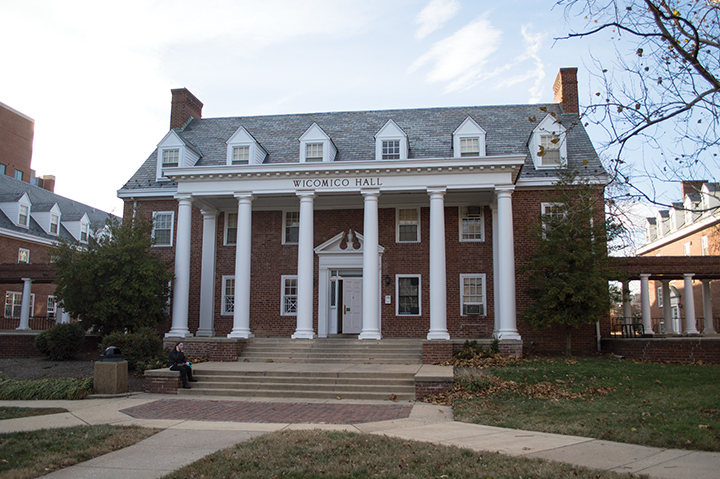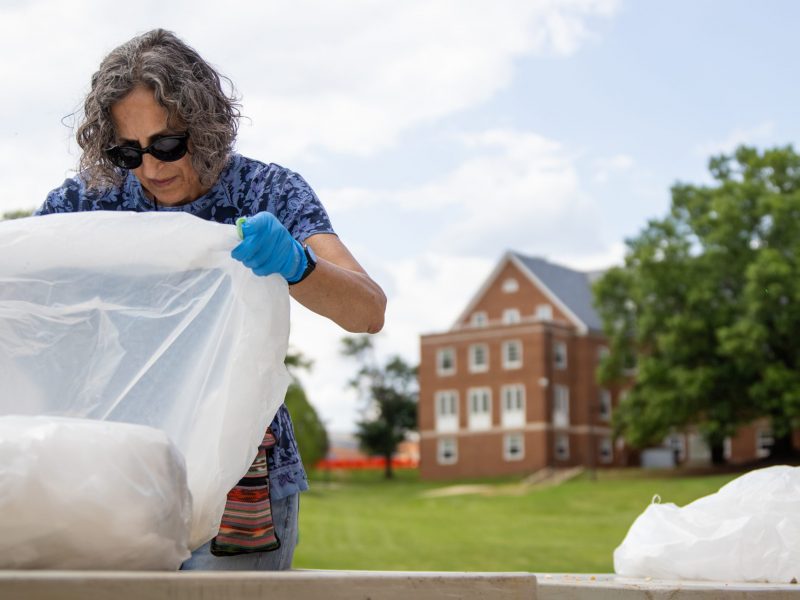The Department of Resident Life released the On-Campus Student Housing Strategic Plan last week, detailing the scale of the next 15 years of expected construction.
The plan, which has an estimated cost of about $700 million, will add about 3,180 beds to campus housing, raising the total from 9,518 in 2014 to 10,784 by 2028. It includes the demolition of Carroll, Caroline, Wicomico and Worcester Halls and the addition of eight new dorms and two new dining halls.
Resident Life Director Deb Grandner said the primary goals of the project include creating new, attractive options for on-campus residents, as well as updating existing facilities and making them “feel more like home.”
“We want to foster a sense of belonging,” Grandner said during a presentation of the plan in Oakland Hall on April 23. “We want students to form an unbreakable bond with this community and this university.”
The plan also aims to ensure housing availability for all freshman and sophomore students who want it, including Freshman Connection students who will be offered on-campus housing starting this fall.
Resident Life’s Assessment and Research office conducted a study several years ago, Grandner said, that revealed a correlation between living on the campus for at least one year and being more likely to graduate. Grandner said these results played a large role when crafting the plan.
“Our primary purpose is to provide the support that will help [students] be successful,” Grandner said. “We’d like to be able to house freshman and sophomores especially. We feel like that is so valuable in the adjustment to the university.”
Going forward, Grandner said the department will continue to look for ways to finance the project, including reaching out to potential donors and seeking partnerships with academic programs.
Residential Facilities Director Jon Dooley said the plan will be revisited over the next several years and adjustments to costs or funding could be made as campus conditions change. He said many conversations will need to happen with review groups and stakeholders in the near future.
Lot 1: Academic Village

Academic Village Timeline
Three new residential buildings and a new dining facility will be erected on the site of Lot 1, near Knight Hall.
The construction of this site is planned in two phases. The first phase, which Resident Life projects will be completed fall 2018, would add 800 beds to the campus. An additional 700 would be added in the second phase, which is projected to be completed in 2019.
Officials plan to create an “Academic Village” on Lot 1 that will be designed to facilitate the expansion of living-learning programs, Dooley said. The ground floors of each of the dorms will be reserved for academic purposes, he said, such as offices for living-learning program leaders and meeting spaces for program students.
“It will serve as a visible symbol of the continuing importance of academic rigor here,” Grandner said.
Grandner and Dooley discussed possible issues regarding the project and affected parties, including the athletic department and the Department of Transportation Services.
DOTS Director David Allen told Dooley there are already many vacant spaces around the campus to cushion the loss of Lot 1, though in February, Allen said DOTS had 1.6 registered parkers per designated space on the campus.
Allen doesn’t foresee having to build a new parking facility, Dooley said, but DOTS has considered the option of enforcing a policy to exclude freshmen and sophomores from parking on the campus.
Another concern is the construction of the Purple Line, which will overlap with this project. Dooley said Resident Life does not know enough yet to determine whether there will be any issues.
Varsity Practice Fields and North Campus
The Varsity practice field site will be home to two new residential buildings and a new dining facility, scheduled to open in fall 2021.
The new dining facility will replace the North Campus Dining Hall, which will be torn down and turned into a fourth residential building for the Ellicott Community by fall 2023.
The practice field site will add 880 new beds to North Campus and the new dorm in the Ellicott Community will add another 350.
The Cambridge Community Center will also be torn down to provide a greater green space in the Cambridge Community.
Over the 15-year period, Resident Life also plans to close each older dorm on North Campus for one year to make necessary updates and renovations, starting with Cambridge Hall in fiscal year 2015.
“When a building goes down for the year, we will be adding living rooms, updating common areas and lounges, renovating bathrooms and putting AC in the buildings that don’t already have it,” Dooley said.
Grandner said renovations will also include the addition of gender-neutral bathrooms to the dorms in an effort to accommodate greater privacy needs of students. These dorms will have one- or two-story additions to provide more living and gathering spaces for students.
The final building to undergo renovations will be Centreville Hall, which is scheduled to reopen fall 2027.
Dorm Razing
In addition to building new facilities, some outdated dorms will be torn down and others will be replaced.
Carroll, Caroline and Wicomico halls will be vacated and torn down in summer 2020, according to the strategic plan. A new building will be erected in their place that will add 450 new beds to North Hill.
Worcester Hall will be vacated and torn down in summer 2022 and Old and New Leonardtown in June 2019 and June 2027, respectively.
“They are beyond their useful life,” said Mike Glowacki, assistant to the director for Resident Life.
Grandner said South Campus apartments and suites would also see updates and renovations over the coming years, but not to the scale seen on North Campus.
Overall, student housing costs will increase by about 4.5 percent for a 10-year period before coming back down to “normal” annual increase rates, Dooley said.
Omer Kaufman, Residence Hall Association president, was the only student on the advisory committee, and he said that from a student perspective, the plan’s cost remains the biggest concern of all.
Kaufman said he is worried that the higher rates could push students to search for off-campus housing, an effect that would cause them to miss out on what he feels is a crucial part of the college experience.
“We have to keep working to find the balance between making our facilities appealing and more equal, and keeping costs down,” Kaufman said.
Correction: An earlier version of this article referred to South Hill as the location of 450 new beds after the destruction of Carroll, Caroline and Wicomico halls. Those dorms are located in North Hill.
The South Campus dorm will be vacated and torn down in summer 2020.





